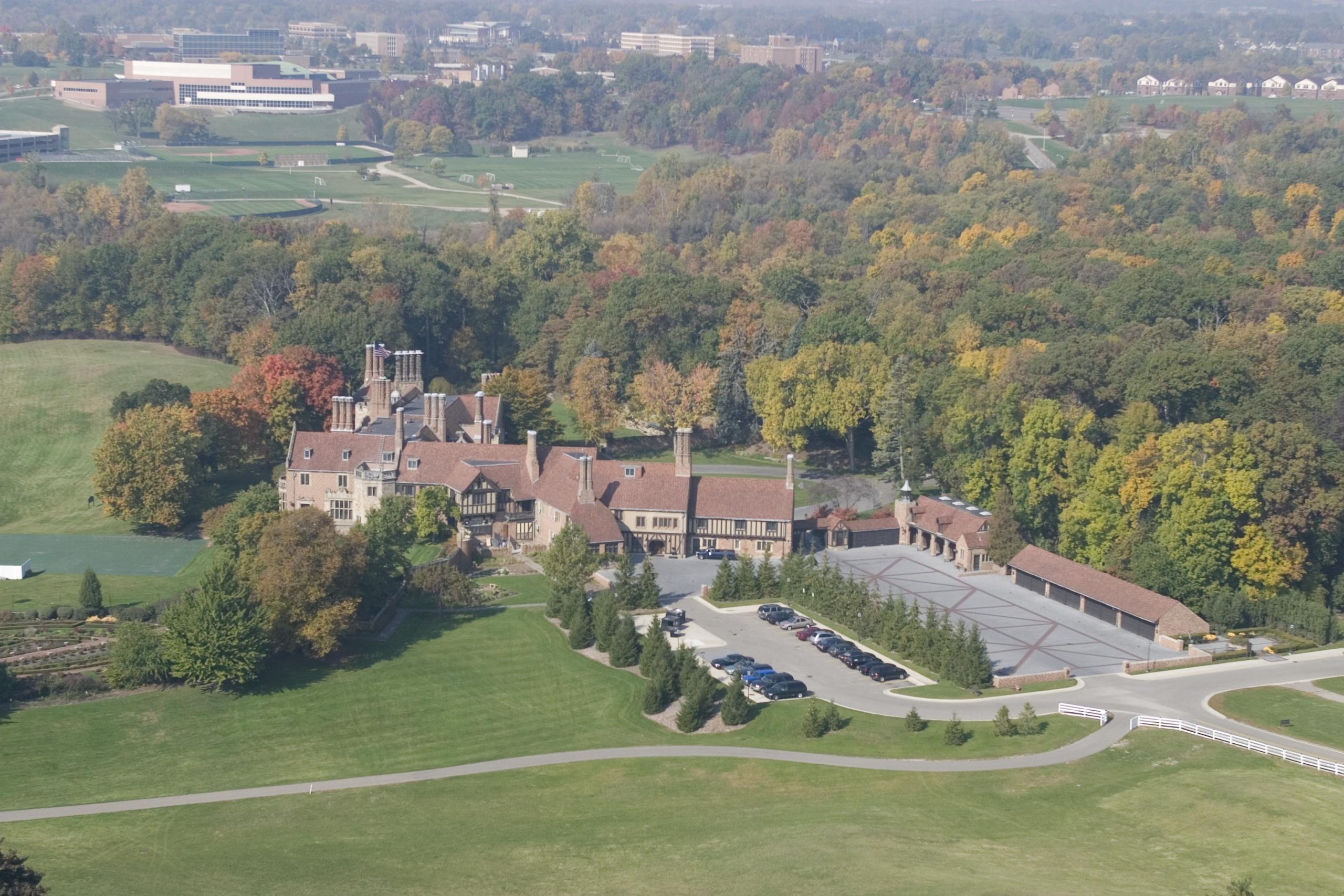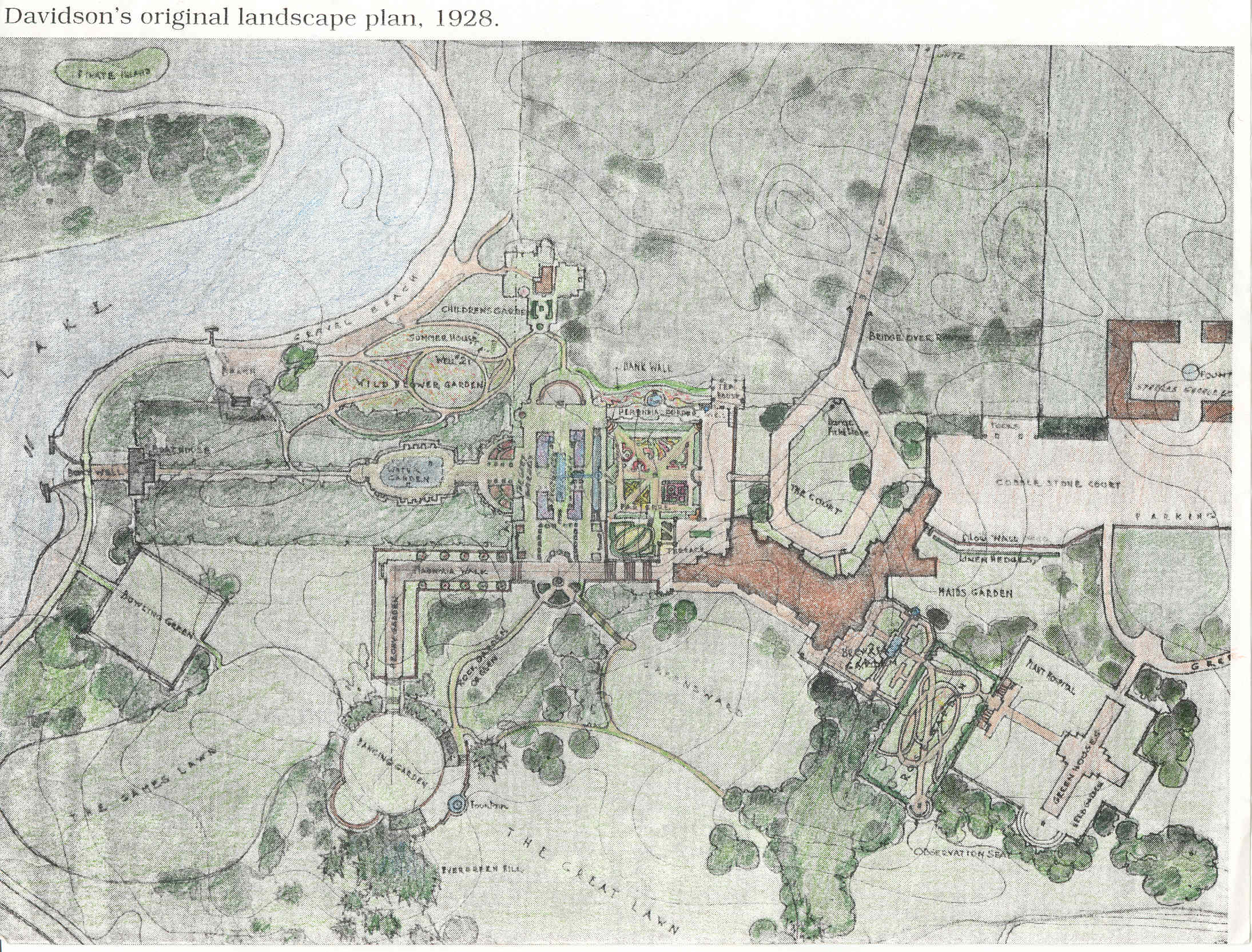Matilda and Alfred Wilson’s decision to construct a new family home on the Meadow Brook Farms property followed a common trend among the era’s nouveau riche. For them, nothing expressed prosperity, success and status better than the creation of a European-inspired country estate. Their retreat to the country afforded them the pleasures that could not be found as city dwellers: tranquility, rejuvenation and its most tangible benefit … land.
While these estate-makers built on the most beautiful sites across America and obsessed over architectural design, they also sought to provided scenic backgrounds for their grand manors. Just as a great estate as intended to reflect the family seat, beautiful gardens became a popular arena through which to display their wealth, having the same societal value as good horses, a box at the opera or a magnificent dinner party. A universal belief, if not conviction, also emerged suggesting that personal contact with nature was especially beneficial and “making gardens”, even on private estates, became socially valuable, if not almost a public duty.
 Matilda Wilson shared in this sentiment and by 1925, already enormously wealthy and herself a capable gardener, she commissioned New York City landscape engineer Charles Leavitt to develop a plan for her young family’s growing Meadow Brook estate.
Matilda Wilson shared in this sentiment and by 1925, already enormously wealthy and herself a capable gardener, she commissioned New York City landscape engineer Charles Leavitt to develop a plan for her young family’s growing Meadow Brook estate.
Although many of Leavitt’s concepts were eventually incorporated into the landscape, it would be English landscape architect Arthur Davidson who would provide the master plan to the Wilsons. His design incorporated an eclectic mix of garden components of every type, style, function and pattern imaginable: formal parterres, wildflower garden, water gardens, rill pools and fountains, expansive vistas, a dancing garden and bowling green, a lake with boathouse and two islands, a children’s and maid’s garden, greenhouse, horse stables and even a plant hospital for ailing plants.
As one looks across the landscape today, it is apparent that in spite of extensive planning and preparation, many of the components were not fully realized. Davidson became seriously ill in 1929, unable to direct its implementation, and the stock market crash the same year caused both financial and moral concerns that may have influenced the Wilsons to dial back.
While the grand plans may not have come to fruition, guests can still tour the magnificent gardens and grounds of the Great Estate. The Walking Estate Tour offers and in-depth glimpse of the land surrounding The Hall and is offered Memorial Day through Labor Day.
This article appears in the Spring 2011 issue of Meadow Brook Magazine. The magazine publishes bi-annually and Meadow Brook Members receive it as part of their membership.


